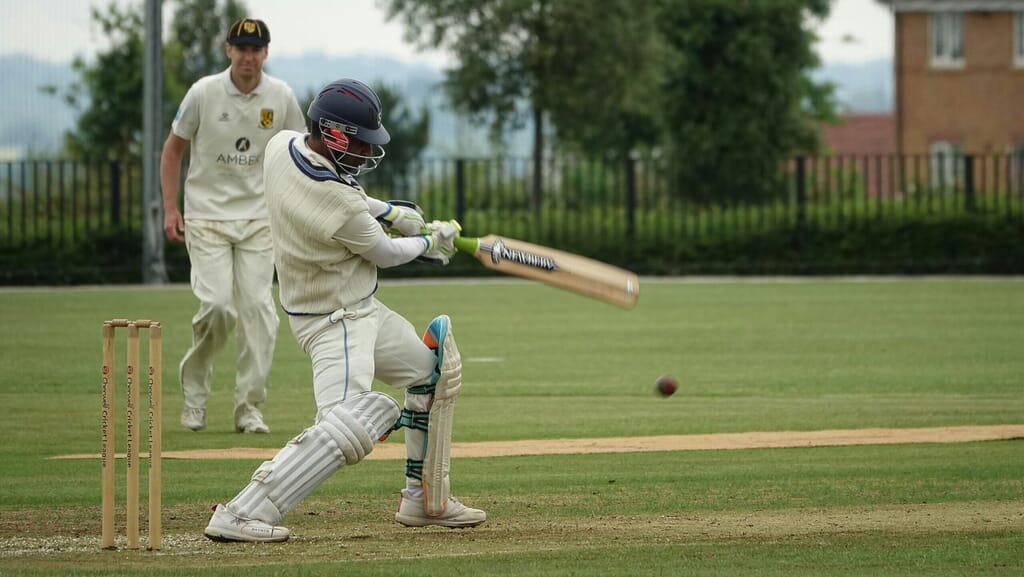Grassroots Cricket is the heartbeat of the sport — the foundation where raw passion meets structured development. It’s where tomorrow’s international stars take their first confident swing, where village grounds turn into training hubs, and where cricket becomes more than a game — it becomes a way of life.
Over the past few decades, the emphasis on grassroots development has reshaped cricket globally. From small academies in India to youth leagues in England and community initiatives in Africa, cricket’s reach has expanded into places once considered far from its mainstream. These programs don’t just create players; they create pathways, opportunities, and lifelong love for the game.
Let’s explore how Grassroots Cricket programs are fueling the next generation of talent and transforming the future of the sport.
The Essence of Grassroots Cricket
At its core, Grassroots Cricket is about accessibility. It’s the stage where children, regardless of background, get a chance to pick up a bat or ball for the first time. It’s about giving every aspiring cricketer a level playing field, literally and metaphorically.
In many countries, local cricket clubs and schools serve as breeding grounds for talent. These are the places where young players learn fundamentals — batting, bowling, fielding, and teamwork — under the watchful eyes of volunteer coaches and mentors.
But grassroots isn’t just about skill-building. It’s about building character, discipline, and passion for the sport. It creates a sense of belonging and community pride, as local players rise to represent their towns, districts, and eventually, their nations.
Why Grassroots Development Matters
The success of international cricket depends heavily on the strength of its grassroots system. Without it, the sport would have no sustainable pipeline of emerging talent. Every global icon — from Sachin Tendulkar to Ben Stokes — began their journey in local cricket setups.
Grassroots initiatives ensure that the sport remains democratic. They bring in diversity, uncover hidden gems from underprivileged areas, and provide structured coaching that bridges the gap between school-level cricket and professional leagues.
Moreover, these programs play a vital social role. They promote physical health, teamwork, leadership, and inclusivity — life skills that extend beyond the boundary ropes. In developing nations, grassroots projects often act as tools of empowerment, keeping youth engaged and inspired.
Global Models of Successful Grassroots Programs
Different countries have taken unique approaches to developing Grassroots Cricket, each suited to their cultural and infrastructural realities.
In England, the England and Wales Cricket Board (ECB) runs the “All Stars Cricket” and “Dynamos” programs, targeting children aged 5 to 11. These initiatives emphasize fun, teamwork, and family involvement, ensuring cricket becomes an early part of childhood.
Australia’s “Milo Cricket” and “Cricket Blast” programs, supported by Cricket Australia, focus on inclusion and accessibility. With modified equipment and short-format games, these initiatives encourage participation from kids of all skill levels.
India, the sport’s largest market, combines government, private academies, and non-profit initiatives to create an unmatched grassroots ecosystem. From Mumbai’s maidans to small-town academies in Jharkhand, talent scouting never stops. Programs like “Khelo India” and “National Cricket Academy” camps further ensure players from every region get noticed.
Meanwhile, countries like South Africa, Bangladesh, and Sri Lanka are investing in school cricket leagues that double as scouting grounds for national youth teams. The Caribbean too has renewed focus on grassroots cricket to revive its once-dominant cricketing culture.
The Role of Coaches and Mentors
Behind every successful grassroots player stands a dedicated coach or mentor. These individuals are the unsung heroes of Grassroots Cricket. They often work voluntarily, driven by passion and the belief that they’re shaping the sport’s future.
Good coaching at the grassroots level isn’t just about teaching technique — it’s about instilling confidence and nurturing potential. Coaches identify strengths early and tailor training accordingly. They help young players understand the mental aspects of the game: patience, focus, and resilience.
In modern setups, mentorship programs have also become essential. Former players and professionals volunteer their time to guide the next generation, offering invaluable insight into game awareness, fitness, and professionalism.
Grassroots Infrastructure and Facilities
The backbone of any Grassroots Cricket program is infrastructure. Unfortunately, access to quality pitches, training equipment, and coaching facilities remains a challenge in many regions.
Countries with well-established cricket systems invest heavily in community grounds, indoor nets, and fitness centers. But in developing nations, innovation often fills the gap. Improvised cricket with tennis balls on uneven grounds, for instance, has produced some of the world’s most fearless players.
Non-profit organizations and sports foundations are playing a critical role here. They build training centers in remote areas, distribute equipment, and organize local tournaments to maintain enthusiasm. The long-term goal is to make quality infrastructure accessible to all — not just those in urban areas.
Women in Grassroots Cricket
The rise of women’s cricket globally can be traced back to strong grassroots efforts. Today, Grassroots Cricket isn’t limited to boys — girls are taking equal strides, supported by inclusive development programs.
Cricket boards and international bodies are working tirelessly to ensure gender equality in youth participation. From the ECB’s “Women’s Softball Cricket Festivals” to India’s school-level girls’ tournaments, opportunities for female players are expanding rapidly.
The success stories of players like Smriti Mandhana, Alyssa Healy, and Sophie Ecclestone are inspiring more young girls to dream big. Grassroots initiatives now emphasize inclusivity as a core principle — ensuring cricket remains a sport for everyone.
The Power of Community Engagement
Grassroots cricket thrives on community spirit. It’s a collective effort involving parents, local clubs, volunteers, and sponsors. Communities often rally around their local teams, turning matches into festivals of unity and pride.
Community engagement also strengthens sustainability. When local businesses sponsor youth kits or schools donate playing grounds, it fosters a sense of ownership. This interconnected ecosystem ensures that even small towns and villages become vibrant cricketing hubs.
Social media has further amplified this engagement. Local tournaments now stream matches live online, giving young players visibility and motivation. Communities no longer just watch — they participate, promote, and celebrate their heroes.
Grassroots Cricket in Developing Nations
Developing cricket nations face unique challenges — limited resources, lack of exposure, and infrastructure gaps. Yet, these challenges often breed creativity.
In Afghanistan, for example, makeshift cricket grounds in war-torn regions produced talents like Rashid Khan and Mujeeb Ur Rahman. Similarly, Nepal and Uganda have seen explosive cricket growth due to youth initiatives driven by local federations and ICC support.
The ICC’s “Cricket for Good” and “Development Program” provide financial and logistical aid to associate nations, ensuring no region is left behind. These programs not only spread cricket’s reach but also promote unity, discipline, and social change through sport.
Role of Technology in Modern Grassroots Development
Technology is transforming Grassroots Cricket in unprecedented ways. Mobile apps, video analysis tools, and online coaching platforms have made professional-level training accessible even in remote regions.
Data analytics is being used to monitor player progress, helping coaches design personalized training programs. Virtual sessions connect young players with elite trainers from across the globe, breaking barriers of geography and affordability.
Social media, too, has turned into a scouting platform. Talented youngsters gain recognition through viral clips, catching the attention of selectors and sponsors. Technology, when used wisely, becomes an equalizer — giving every aspiring cricketer a fair shot at success.
Government and Corporate Support
Sustainable grassroots development depends on strong institutional backing. Governments and private corporations have begun to recognize cricket’s power to inspire and unite communities.
National boards collaborate with education ministries to integrate cricket into school curriculums. Corporate sponsors, on the other hand, fund academies, tournaments, and scholarships. This synergy between public and private sectors ensures continuity and scale.
For example, in India, Reliance Foundation and Tata Trusts have funded youth programs that reach thousands of kids annually. In England, NatWest’s partnership with ECB supports community cricket clubs nationwide. These alliances prove that when cricket and commerce align, the results are transformative.
Challenges Facing Grassroots Cricket
Despite progress, several obstacles persist. Limited funding, lack of professional coaching, and uneven infrastructure continue to restrict growth. In rural areas, players often travel long distances for training, while in urban areas, space constraints limit opportunities.
Additionally, socio-economic factors sometimes prevent children from pursuing cricket seriously. Equipment costs, travel expenses, and limited parental support can derail potential careers. Addressing these issues requires collaboration among boards, NGOs, and sponsors to make cricket more inclusive and affordable.
However, the spirit of the game often overcomes these hurdles. Passion remains the driving force behind every successful grassroots journey.
The Future of Grassroots Cricket
The future of Grassroots Cricket is brighter than ever. With global investment, technological innovation, and inclusive programs, the sport is set to reach new frontiers.
Emerging nations are now part of mainstream tournaments, proving that talent knows no borders. Franchise leagues are also contributing by funding youth academies and scouting regional players. The ecosystem is becoming more connected, transparent, and opportunity-driven.
As the next generation of players rises from dusty fields and schoolyards, cricket continues to evolve — not just as a sport, but as a global community built on dreams, dedication, and diversity.
Read also:
afghanistan national cricket team vs england cricket team match scorecard
pakistan national cricket team vs england cricket team match scorecard
afghanistan national cricket team vs england cricket team
england cricket team vs pakistan national cricket team match scorecard
sri lanka national cricket team vs bangladesh national cricket team timeline
afghanistan national cricket team vs south africa national cricket team match scorecard
pakistan national cricket team vs england cricket team

